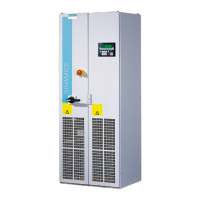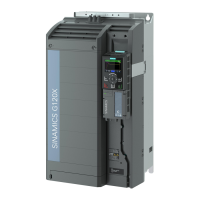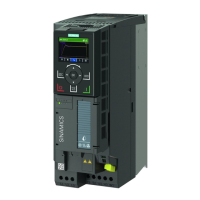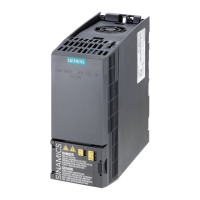Description of function
*EDPOUSPMMFS
*RDPOUSPMMFS
4QFFETFUQPJOU
$BMDVMBUFETQFFE
BDUVBMWBMVF
&ODPEFSMFTTWFDUPS
DPOUSPM
7FDUPSDPOUSPM
XJUIFODPEFS
.FBTVSFETQFFE
BDUVBMWBMVF
.PUPSBOEDVSSFOUNPEFM
$BMDVMBUFTQFFE
MJNJUT
5PSRVF
TFUQPJOU
.FBTVSFE
WPMUBHF
.FBTVSFE
DVSSFOU
0VUQVUGSFRVFODZ
0VUQVU
WPMUBHF
7PMUBHFBOHMF
4MJQ
4QFFEDPOUSPMMFS
5PSRVF
QSFDPOUSPM
.BYJNVNTQFFE
$BMDVMBUFBDDFMFSBUJ
POUPSRVF
5SBOTGPS
NBUJPO
5SBOTGPS
NBUJPO
'MVYTFUQPJOU
6QQFSUPSRVFMJNJU
-PXFSUPSRVFMJNJU
$VSSFOUMJNJU
1PXFSMJNJUXIFOHFOFSBUJOH
4UBUJDUPSRVFTFUQPJOU
4VQQMFNFOUBSZBDDFMFSBUJPOUPSRVF
1PXFSMJNJUXIFONPUPSJOH
$BMDVMBUF
UPSRVFMJNJUT
Q
,
1
5
*
Q
Q
Q
Q
Q
Q
Q
1)
Only for induction motors
2)
Choice of control mode
3)
Settings required
Figure14-116 Simplied function diagram for speed control with a speed controller
The converter uses the motor model to calculate the following closed-loop control signals
from the measured phase currents and the output voltage:
• Current component I
d
• Current component I
q
• Speed actual value for encoderless speed control
The setpoint of the current component I
d
(ux setpoint) is obtained from the motor data.
For speeds above the rated speed, the converter reduces the ux setpoint using the eld
weakening characteristic.
At an increase of the speed setpoint, the speed controller responds with a higher setpoint
of the current component I
q
(torque setpoint). How the closed-loop control responds to the
higher torque setpoint depends on the motor type:
• For induction motors, the closed-loop control adds a higher slip frequency to the output
frequency. The higher output frequency also results in a higher slip in the motor, which is
proportional to the accelerating torque.
• For synchronous motors, the closed-loop control increases the load angle instead of the slip.
Functions
14.10Closed-loop drive control
SINAMICS G220 converter
508 Operating Instructions, 04/2024, FW V6.2, A5E51781573B AB
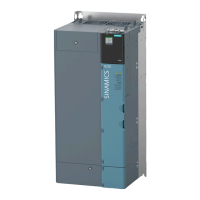
